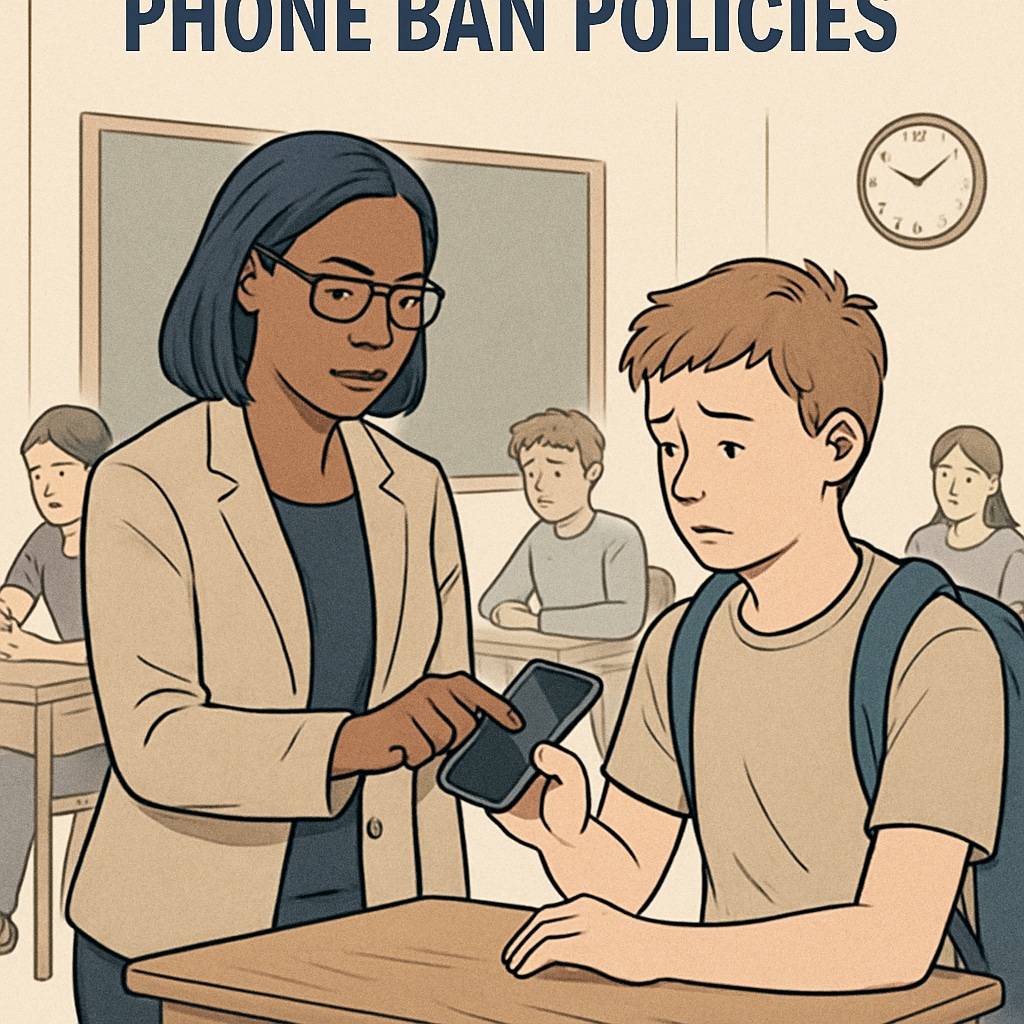Statewide school phone bans have become a controversial topic in education, as policymakers aim to create focused learning environments while addressing concerns about safety and implementation challenges. While these bans promise benefits like reduced distractions and improved academic focus, they also raise questions about student safety, equitable access to education resources, and the feasibility of enforcement. This article analyzes the multidimensional effects of these policies and explores alternative approaches to digital device management in schools.
The Benefits of School Phone Bans
Proponents of school phone bans argue that removing mobile devices from classrooms helps eliminate distractions, fostering a more focused learning environment. Studies have shown that students perform better academically when digital interruptions are minimized, as phones often divert attention away from lessons and homework. Additionally, phone bans can reduce instances of cyberbullying during school hours, creating a safer and more inclusive environment for students.
Another advantage of these policies is the promotion of interpersonal communication. Without the constant lure of phones, students may engage more actively with peers and teachers, strengthening social skills and collaborative learning experiences. As a result, classrooms could become spaces of heightened engagement and productivity.

Challenges and Hidden Costs
Despite the benefits, phone bans are not without their drawbacks. One major concern is student safety. Parents often rely on their children’s phones to stay in touch during emergencies or unexpected schedule changes. A complete ban could create anxiety among families who view mobile devices as essential tools for communication and security.
Furthermore, the implementation of phone bans requires significant investment in enforcement mechanisms. Schools must allocate resources to monitor compliance, train staff, and establish clear guidelines. These measures can strain budgets, diverting funds from other critical educational needs like teacher development or classroom supplies.
The issue of equity also arises, as some students may rely on their phones for access to digital educational resources, including translations, calculators, or research tools. For these students, phone bans could inadvertently widen the gap between those with access to external learning aids and those without.

Sustainable Alternatives to Phone Bans
Rather than outright bans, schools could consider more inclusive and flexible approaches to managing digital devices. For example, implementing “phone-free zones” or designated times for phone use within schools might strike a balance between reducing distractions and addressing safety concerns. These policies allow students to use their devices responsibly while maintaining the integrity of the learning environment.
Schools could also invest in technology education programs that teach students to manage their screen time effectively. By fostering digital literacy and self-regulation, educators can empower students to use their devices as tools for learning rather than sources of distraction.
Another alternative is leveraging school-provided devices for educational purposes. Tablets or laptops equipped with monitored internet access can offer students the benefits of digital resources without the risks associated with unrestricted phone use. This strategy ensures equity by providing all students access to the same tools while maintaining a controlled and secure digital environment.
Conclusion: Navigating the Double-Edged Sword
Statewide school phone bans present a double-edged sword, offering undeniable benefits for classroom focus and interpersonal communication while introducing concerns about safety, cost, and equity. Policymakers and educators must carefully weigh these factors to implement policies that are both effective and inclusive. By exploring alternative strategies like phone-free zones, digital literacy education, and school-provided devices, schools can create environments that support both academic excellence and student well-being.
As the debate continues, it remains essential to prioritize the needs of all stakeholders—students, parents, teachers, and administrators—while adapting to the evolving role of technology in education.
Readability guidance: This article uses short paragraphs, active voice, and transitions for clarity. Lists highlight key points, and overlong sentences are minimized to maintain readability.


